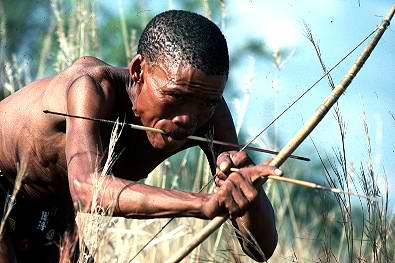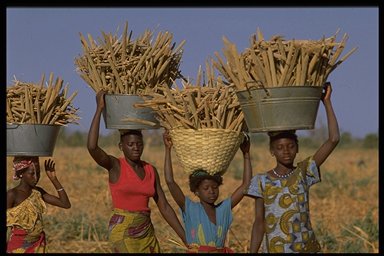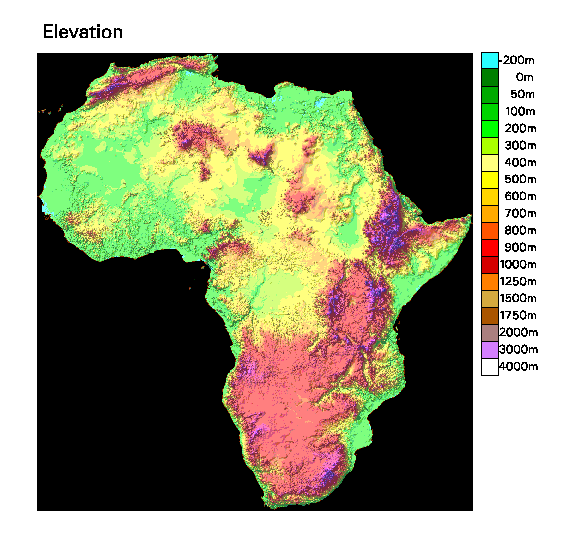
| Home | History 322 lecture list | Wallace G. Mills Hist. 322 1 Peoples of S. Africa |
Peoples of South Africa
 - this approach produces a living which is meagre and precarious; in this economy there are few means to build up reserves of food, and the people are vulnerable to natural phenomena (droughts, fire, disappearance of game, etc.). Life is often characterised by sharp fluctuations— scarcity and windfalls. If a large animal is killed, then people gorge themselves until it is gone as they can’t keep meat.
- this approach produces a living which is meagre and precarious; in this economy there are few means to build up reserves of food, and the people are vulnerable to natural phenomena (droughts, fire, disappearance of game, etc.). Life is often characterised by sharp fluctuations— scarcity and windfalls. If a large animal is killed, then people gorge themselves until it is gone as they can’t keep meat. - the much more intensive exploitation and control of the food supply enabled much denser populations, more settled societies, and much more tightly organised social and political systems. However, there was a tendency to subdivide as the size of societies grew larger. Chiefs were regarded as ‘fathers of the people’ and as scale got too big and chiefs got more remote, a relative of the chief might be in a position to attract followers and a division would occur. The organisation of chiefly households (with polygyny) tended to facilitate this process.
- the much more intensive exploitation and control of the food supply enabled much denser populations, more settled societies, and much more tightly organised social and political systems. However, there was a tendency to subdivide as the size of societies grew larger. Chiefs were regarded as ‘fathers of the people’ and as scale got too big and chiefs got more remote, a relative of the chief might be in a position to attract followers and a division would occur. The organisation of chiefly households (with polygyny) tended to facilitate this process.Geographical Background

 - this topography has had a number of very important historical ramifications; it sharply inhibited penetration of much of Africa by outsiders. It prevented navigation very far inland because large rivers were disrupted by large, sometimes spectacular falls and rapids (such as, Stanley Falls on the Congo River and Victoria Falls on the Zambezi River).
- this topography has had a number of very important historical ramifications; it sharply inhibited penetration of much of Africa by outsiders. It prevented navigation very far inland because large rivers were disrupted by large, sometimes spectacular falls and rapids (such as, Stanley Falls on the Congo River and Victoria Falls on the Zambezi River).|
Lake Ontario |
75 |
South Africa—low veld |
1000-2000 |
|
Lake Superior |
183 |
South Africa—high veld |
1500-2000 |
|
high point in Algonquin Park, Ont. |
556 |
Windhoek, Namibia |
2000 |
|
Lake Winnipeg |
216 |
Pretoria & Johannesburg |
1500-2000 |
|
most of Manitoba |
<400 |
Lesotho—low point |
1400 |
|
southern Saskatchewan |
876 |
Lesotho—high point |
3482 |
|
Edmonton |
<1000 |
||
|
Calgary |
>1000 |
| HOME | History 322 list | Top of the page |